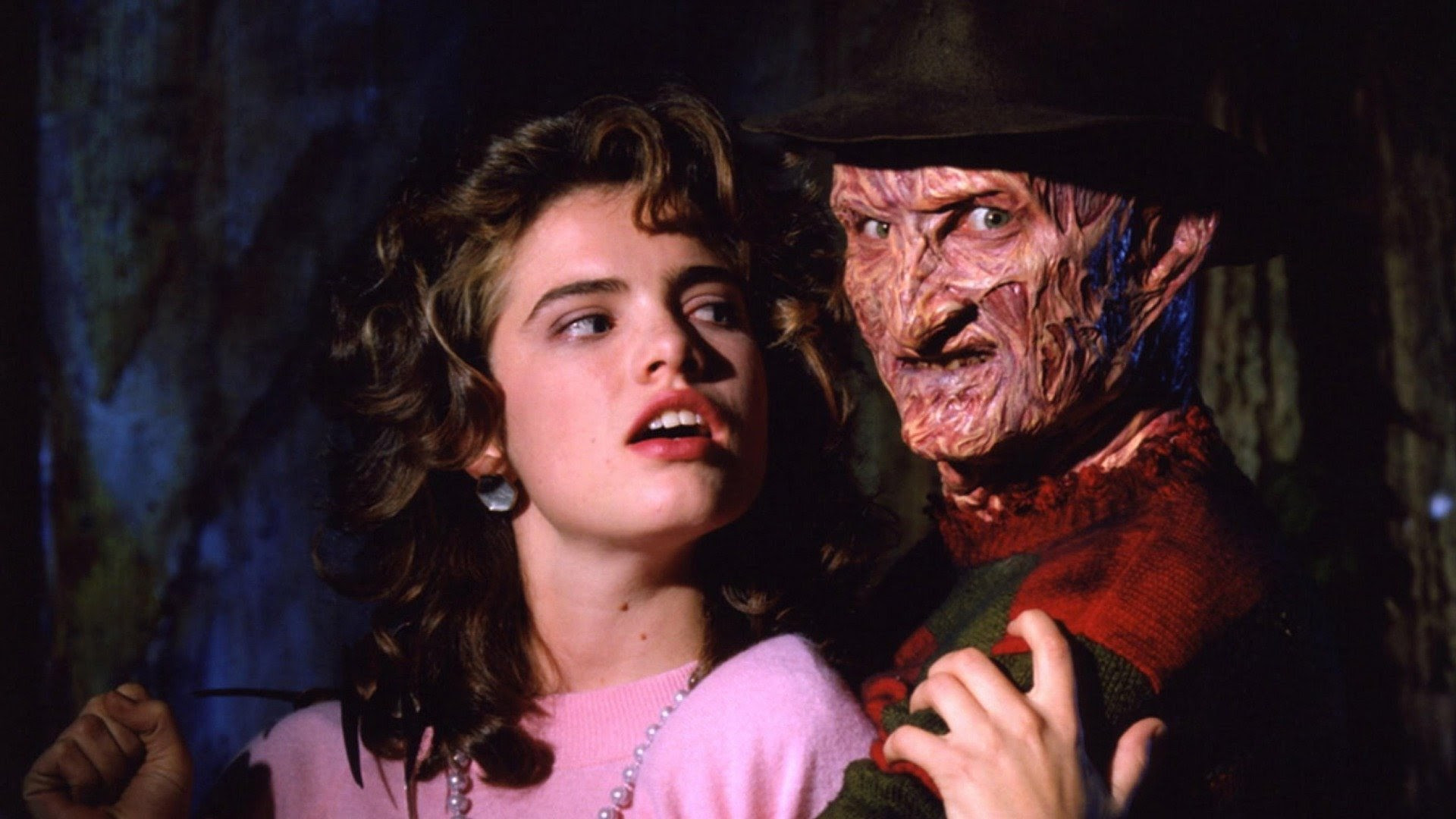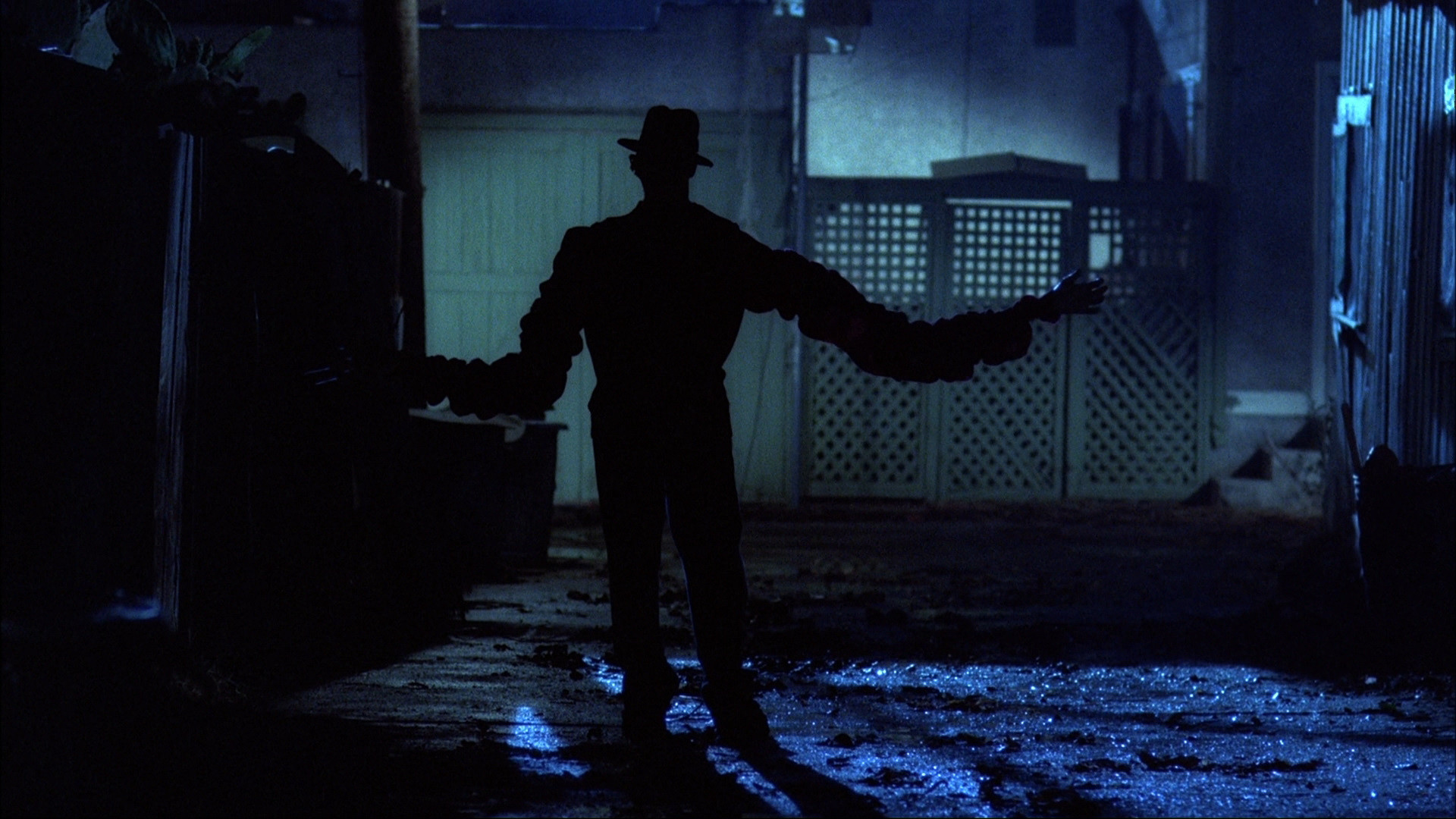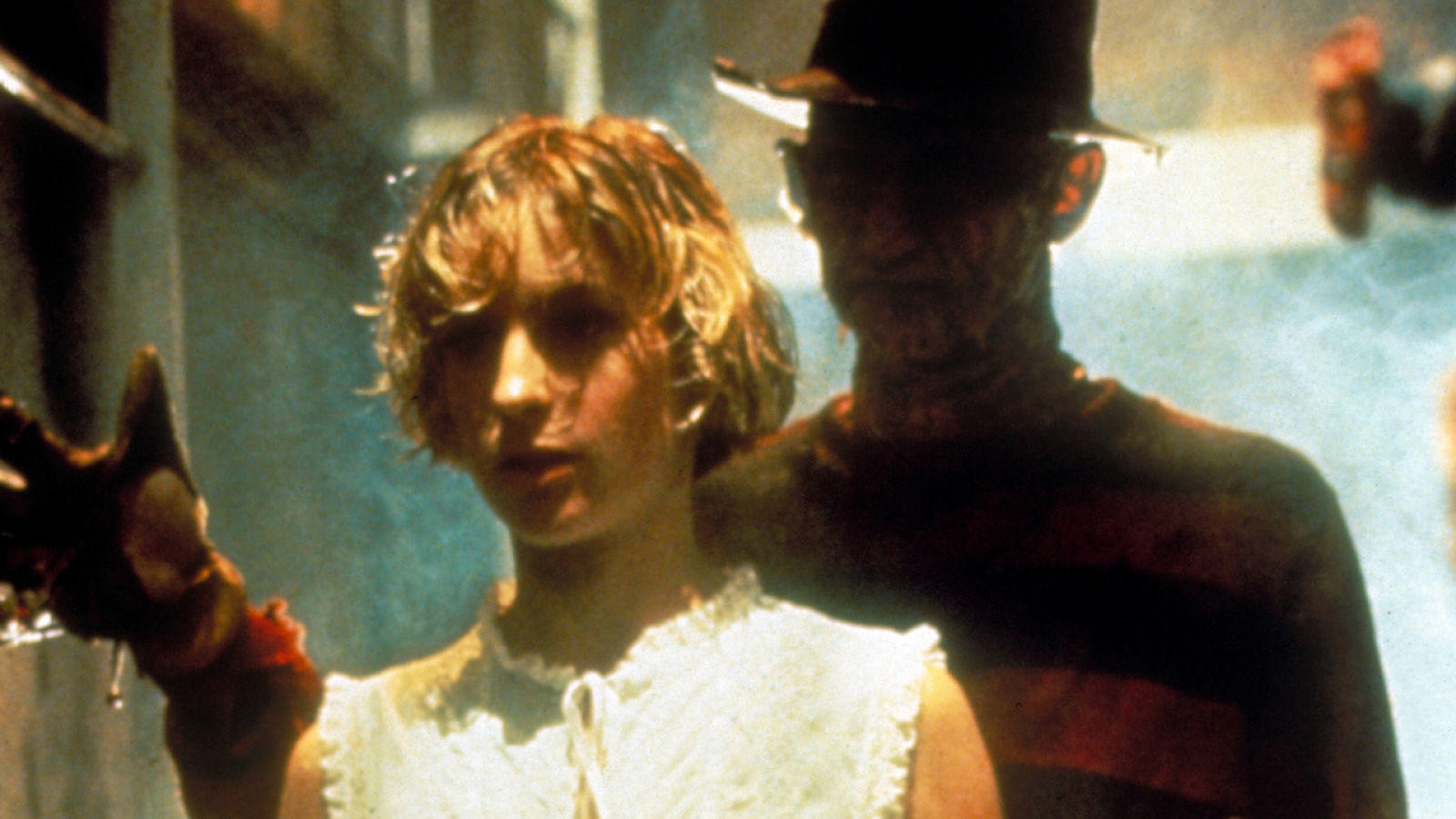Wes Craven’s 1984 classic, A Nightmare on Elm Street, holds a unique and terrifying space in the horror genre. For someone who typically approaches scary movies with trepidation, revisiting this iconic film proved to be a surprisingly enjoyable and insightful experience. Often, it’s the idea of real-world horror that truly chills to the bone, the kind that hits close to home and feels disturbingly plausible. Think of films where the terror stems from human actions, like the unsettling suspense of The Gift (2015) – those are the stories that can linger and haunt long after the credits roll.
However, A Nightmare on Elm Street operates in a different realm of fear. It plunges into the surreal landscape of dreams, where the rules of reality are suspended, and the monstrous Freddy Krueger holds dominion. This separation from tangible reality, paradoxically, makes the film less immediately terrifying and more captivating. The film’s graphic and gory sequences, while undoubtedly intense, exist within the dream world, creating a layer ofRemove this phrase of separation that allows for a different kind of engagement – one that appreciates the film’s creativity and dark imagination rather than succumbing purely to fear.
The Terrifyingly Creative Premise of Freddy Krueger
At its core, A Nightmare on Elm Street presents a chillingly simple yet profoundly effective concept: a group of teenagers are being terrorized and killed in their dreams by Freddy Krueger, the vengeful spirit of a child murderer. The film masterfully preys on a universal vulnerability – sleep. The sanctuary of our dreams becomes a battleground, a place where escape is impossible, and the consequences are brutally real.
Wes Craven’s genius truly shines in the film’s production design and the inventiveness of the dream sequences. Freddy Krueger, with his razor-glove and disfigured visage, is instantly iconic, but the film’s horror extends far beyond his terrifying appearance. The death scenes are spectacularly imaginative and over-the-top, showcasing Craven’s playful yet macabre approach to horror. From a teen violently thrashed around a room to another nearly drowned in a bathtub, and the infamous geyser of blood erupting from a bed, these moments are less about realistic gore and more about surreal, nightmarish spectacle. This artistic approach elevates the film beyond simple slasher fare, turning each kill into a dark piece of performance art within the dreamscape.
Why ‘A Nightmare on Elm Street’ Resonates Beyond Jump Scares
While the film delivers on classic horror elements, its enduring appeal lies in its exploration of deeper anxieties. The concept of being haunted in your dreams is inherently unsettling. Dreams are intensely personal and private spaces, and the violation of this sanctuary is profoundly disturbing. This taps into a primal fear of losing control, even within the confines of our own minds.
Comparing A Nightmare on Elm Street to films like Invasion of the Body Snatchers, which evoke a different kind of dread – the fear of losing your very self and becoming something monstrous – highlights the nuanced spectrum of horror. Elm Street focuses on the terror of inescapable vulnerability, while body horror plays on the fear of transformation and loss of identity. Both are effective, but in different ways.
The performances in A Nightmare on Elm Street are also noteworthy. Robert Englund’s portrayal of Freddy Krueger, even in this first film before the character leaned into more camp elements in sequels, is chilling and memorable. The young cast, including a fresh-faced Johnny Depp and Heather Langenkamp as the determined protagonist Nancy Thompson, deliver compelling and believable performances, grounding the fantastical horror in relatable human experiences.
Ultimately, A Nightmare on Elm Street is a deserving horror classic. It’s a film that is not only scary but also inventive, thought-provoking, and surprisingly fun to watch. While debates continue about which sequel reigns supreme (with Dream Warriors often cited as a favorite), the original Nightmare on Elm Street remains a benchmark for imaginative horror filmmaking and a testament to Wes Craven’s mastery of the genre. What truly scares you in movies? Exploring the diverse landscape of fear in cinema is always a fascinating journey.





